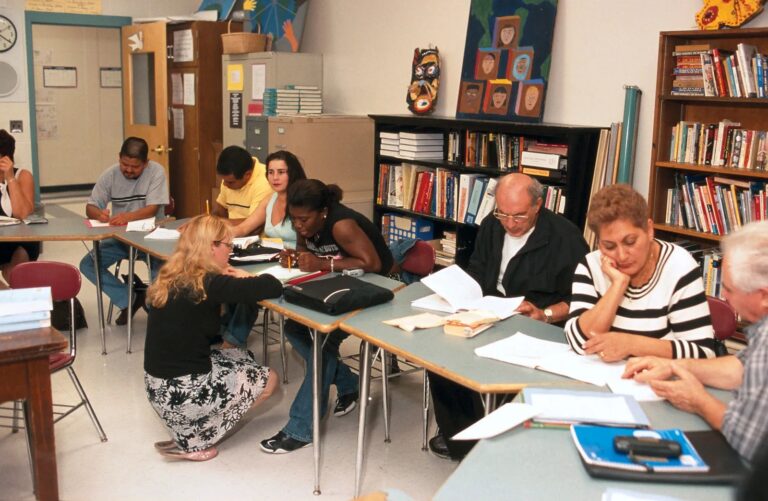2024-11-15 Progressive Story Building




Initial Pair Work Questions (15 minutes)
For Set 1 (The Green Jade Ring):
- Why is the antique shop owner so interested in this particular ring?
- What’s unusual about how the ring came into the shop?
- What’s the real story behind the street musician’s jewelry box?
- Why did the musician choose this particular spot to perform?
For Set 2 (The Letter):
- What makes this letter so unusual that it caught the mail carrier’s attention?
- Why are the stamps strange? What do they show?
- How did the letter end up being used as a bookmark?
- What kind of book was it found in?
Story Development Questions (15 minutes)
- What secrets might these objects hold?
- Who owned these objects before?
- Why are they appearing now?
- What happens to people who possess these objects?
When Groups Combine (20 minutes)
For Ring Groups:
- How does the ring travel from the antique shop to the park?
- What powers or properties does the ring have?
- Why did the previous owner give it up?
- How does it change the lives of people who encounter it?
For Letter Groups:
- What message does the letter contain?
- Why is it appearing in different places?
- Who wrote the original letter?
- What happens when someone reads it?
Final Class Combination (20 minutes)
- How could the ring and the letter be connected?
- What time period are these objects from?
- Is there a shared purpose behind their appearances?
- What larger mystery might connect these objects?
- Who might be orchestrating these events?
Language Support
Useful phrases for mystery stories:
- “At first glance…”
- “Little did they know…”
- “To their surprise…”
- “Mysteriously…”
- “Upon closer inspection…”
- “Something caught their eye…”
- “For some strange reason…”
Story Development Tips
Consider:
- The five senses when describing the objects
- The emotional reactions of characters
- Background details that add atmosphere
- Possible plot twists
- Clear cause and effect relationships







RE: AI’s work
Is “This” in the sentence “This was made automatically with NotebookLM” the dialogue between [Man] and [Woman]? If so, does this mean that AI creates a dialogue for explanation from educational planning materials??? Then, I just have to say “Wow”
But at some places, I felt something wrong;
those are …..
1. The speakers of transcript are different from the audio data in some places.
For example, in a conversation where a female voice speaks, the transcript shows the speaker as [Man] and vice versa.
e.g.
Transcript:
[Man] 0:01:18 Hmm. Three words. Got it.
[Woman] 0:01:21 <> Next you pair. <- woman asks and woman answers
[Man] 0:01:23 Pair.
[Woman] 0:01:24 <> It means you talk to another student. <- ditto
Audio:
[Man] 01:18 Hmm. Three words. Got it. <> <- man asks
[Woman] 01:21 Next you pair. <- woman answers
[Man] 01:23 Pair. <> <- man asks
[Woman] 01:24 It means you talk to another student. <- woman answers
2. Transcript and audio match, but from the conversation flow, the speaker should have changed from woman to man???
[Woman] 0:02:59
So 15 minutes to make a story with a partner. Exactly.(<- this ‘Exactly’ was actually said by man.)
<> The teacher makes a group of four students. Two pairs are in each group.
<> woman asks and woman answers at both transcript and audio.
RE: One mistake “what they said wrong about the lesson plan”,
At 0:03:41, [Woman] says “Yes. Now the class has four stories.”, but at phase 2, two stories of same photo set are already combined into one new story, so the whole class has two newly combined stories, instead of four. Isn’t this the ‘one mistake’???
I couldn’t paste my previous post properly, so please discard it.
Try again.
RE: AI’s work
Is “This” in the sentence “This was made automatically with NotebookLM” the dialogue between [Man] and [Woman]? If so, does this mean that AI creates a dialogue for explanation from educational planning materials??? I just say “Wow”
But at some places, I felt something wrong;
those are …..
1. The speakers of transcript are different from the audio data in some places.
For example, in a conversation where a female voice speaks, the transcript shows the speaker as [Man] and vice versa.
e.g.
Transcript:
[Man] 0:01:18 Hmm. Three words. Got it.
[Woman] 0:01:21 “What’s next?” Next you pair. <- woman asks and woman answers
[Man] 0:01:23 Pair.
[Woman] 0:01:24 “What does that mean?” It means you talk to another student. <- ditto
Audio:
[Man] 01:18 Hmm. Three words. Got it. “What’s next?” <- man asks
[Woman] 01:21 Next you pair. <- woman answers
[Man] 01:23 Pair. “What does that mean?” <- man asks
[Woman] 01:24 It means you talk to another student. <- woman answers
2. Transcript and audio match, but from the conversation flow, the speaker should have changed from woman to man???
[Woman] 0:02:59
So 15 minutes to make a story with a partner. Exactly.(<- this ‘Exactly’ was actually said by man.)
“ Then what happens? What’s the next step? Next is story combining.” The teacher makes a group of four students. Two pairs are in each group.
“ ….. “ woman asks and woman answers at both transcript and audio.
RE: One mistake “what they said wrong about the lesson plan”,
At 0:03:41, [Woman] says “Yes. Now the class has four stories.”, but at phase 2, two stories of same photo set are already combined into one new story, so the whole class has two newly combined stories, instead of four. Isn’t this the ‘one mistake’???
If your Google (Gmail) account’s language is set to English, you can upload something to NotebookLM in any language and ask questions about it in English. If your account uses Japanese, you can ask questions in Japanese. It’s an absolutely amazing tool. Try uploading a technical paper PDF in English and you can interact with it in Japanese. It’s magical. More people should know about it.
For example, try one of these papers:
https://www.sciencedirect.com/science/article/pii/S1571064513001188
However, the AI podcast feature only works in English for now. I tried to hack it to work in Japanese, but the best it can do is read Japanese characters in Chinese. People have gotten it to work in a few European languages, but only English is officially supported.
The reason why the speakers aren’t always labeled properly, without getting too technical, is because I’m using free, open source software to convert the speech to text, then label the speakers. The technology is still under collaborative development by people from around the world, most of whom work on it without pay in their free time. If I used a different tool I’d probably get better results. I could have proofread the transcript but I’m too busy. Also, I was curious to see if anyone would notice. In other words, I was wondering if anyone from our class is actually reading this stuff I’m spending my time making.
I have another website where I’ve started using this technology to make listening & reading lessons for my private students. They choose the material and I use AI (and my brain–it’s not completely automatic!) to create individualized lessons that are interesting to them. One of my students is a Bob Dylan fan, another keeps honeybees, another is a 13 year old who likes insects, etc. I’m still experimenting–there are still lots of rough edges. So far, everyone has told me they enjoy studying this way.
https://lessons.starfishenglish.com
Thanks!!
I was able to understand the series of processes .
But I still do not understand the whole picture of NotebookLM, so as a first trial, I just uploaded lyrics of P!nk’s F**kin’ Perfect (looking at your another website 🙂 ) to see how it would work, or rather what would happen. Just like your Lesson Plan Explanation, two person’s conversation was created and it gave a deep explanation about the interpretation of the lyrics. As both audio and text file were provided, I could understand what they were saying word for word. I’ve always liked this song, but listening to their explanation, now I like it even more.
Their English is very colloquial, making it hard to understand if you don’t know the all the colloquialisms. Here’s a prompt I put in the “Customize” field to make them speak more simple (but still natural-sounding) English. It’s the button next to “Generate” or 作成:
Be brief.Listener is an adult beginner level English speaker.
Strictly use ONLY beginner level words and grammar.
ALWAYS explain the meanings of difficult & low-frequency words.
ALWAYS use simple past/present & present continuous.
Avoid idioms, phrasal verbs, & colloquialisms.
Avoid complex past tenses & multiple clauses.
Host & expert must not parrot or interrupt each other.
ALWAYS use contractions, e.g. say "don't", "you're" & "it's" instead of "do not", "you are" & "it is".